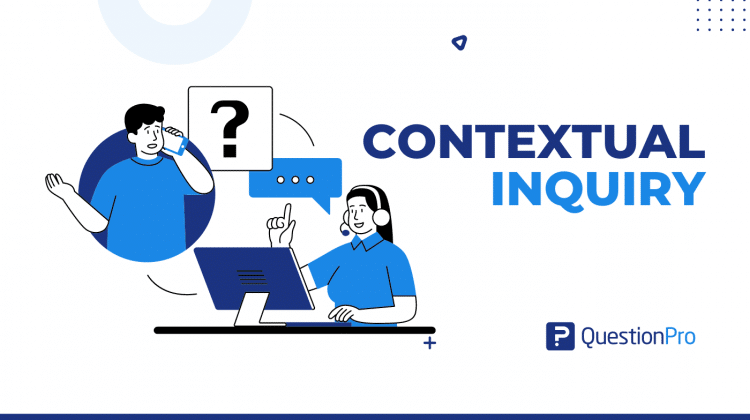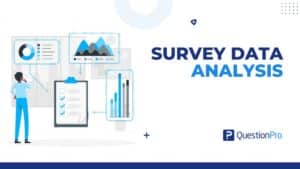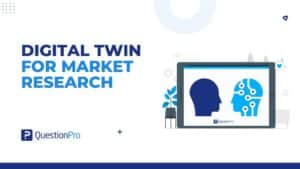
Contextual inquiry is a way to do research that involves watching and talking to users in their natural environment to learn more about their behaviors, needs, and preferences. This method is used a lot in software development, product design, and service delivery, among other things.
Contextual inquiry gives researchers much information about how users interact with products or services by observing them in their natural environments. It also finds pain points that other research methods might need to clarify.
It can take a lot of time and resources and requires skilled researchers to observe and interview people well. It’s a great way to learn about what users want and how they act, and it’s often combined with other research methods to get a complete picture of how users feel.
What is contextual inquiry?
Contextual inquiry is qualitative research that looks at users in their natural environment to determine what they want and need. It involves watching and talking to users as they do their tasks to learn more about their habits, needs, and reasons for doing what they do.
During a contextual inquiry, the researcher usually spends time with the user, watching them do tasks and asking them questions about their experiences. The goal is to learn as much as possible about how a user interacts with a product, service, or system in the real world, not just in a lab setting.
User-centered design processes often use contextual inquiry to learn more about users and their needs so that products and services that better meet those needs can be made. By watching people in their natural environment, designers can learn more about how people use technology, find pain points, and find ways to improve it.
LEARN ABOUT: Qualitative Research Questions and Questionnaires
Pros and cons of contextual inquiry
Contextual inquiry involves user research methods, including watching and talking to users in natural environments. Here are some pros and cons of using contextual inquiry:
Pros:
When you want to learn more about the users, a contextual inquiry session can help. This method might help you most at the beginning of your project.
For example, when you want to make an app but need to know whether your users will benefit.
You can use this method to find out how users are solving the problem your app is trying to solve and utilize this method if you want to find out what other applications are out there and what participants use instead.
Here are some excellent reasons why your UX research should include a contextual interview session:
- It shows information and data that users may need to know.
- Watching users in their natural environment shows more accurate information.
- Compared to other qualitative research methods, it gives very detailed information.
- This method can be used by a user no matter where they are.
Cons:
This approach has several drawbacks, which include the following:
- Use of time and resources to a high degree. Compared to other research methodologies, this method requires substantial time for participant visits and observations. In addition, this can be expensive.
- A qualitative technique needs much effort to be “statistically significant.” A researcher must carefully interpret the results from this type of study to obtain helpful information for project development. This can be accomplished by doing additional research to determine the impact of the contextual study-identified concerns.
LEARN ABOUT: Qualitative Interview
Ways to conduct a contextual inquiry
Contextual inquiry can give valuable information about users’ needs, goals, and behaviors, which can be used to design better products, services, or systems. Here are some ways to conduct a context-based inquiry:
1. Define the research questions:
Start by writing down the research questions you want to answer through contextual inquiry. What do you like to learn about your users and their situations? What are their main problems, needs, and goals?
2. Pick the participants:
Find the participants who represent the target user group or audience. Choose people with different experience levels, knowledge, and behavior concerning the product or service.
3. Plan the site visit:
Plan a visit to the participants’ natural environment, such as their workplace, home, or a public place. Plan the visit for a time that works for the participants and tell them why they are going.
4. Observe and document:
Watch the participants do their tasks related to the product or service. Take notes, photos, or videos to record their behavior, environment, and the things they use. Ask them to think out loud and explain their actions, thoughts, and choices.
5. Interview and clarify:
After the observation, do a semi-structured contextual inquiry interview with the participants to clarify and expand on their behavior and insights. Ask them open-ended questions, encouraging them to discuss their thoughts, feelings, and perspectives.
6. Analyze the data:
Look at the data you gathered from the observation and user interviews to find themes, patterns, and insights. Summarize the findings in a report or presentation highlighting the most important insights and suggestions for the design team.
7. Validate the findings:
Validate the findings with the participants and other stakeholders to ensure they reflect the users’ reality and context. Use the findings to guide the design process and make decisions about the product or service.
Contextual inquiry tips
Contextual inquiry requires participants to be observed and interviewed in their natural environments, facilitating a deeper understanding of their behaviors, needs, and preferences. Here are some ways to make an excellent contextual inquiry:
- Be sure you have a clear idea of your research questions, participants, and how things will work.
- Make friends with the participants so they feel welcome and important.
- Watch what people do without getting in the way, and don’t invade their privacy.
- Ask open-ended questions to get people to talk about their thoughts and ideas.
- Take pictures of the participants’ physical space, objects, and social interactions.
- Focus on how the user feels, what drives them, and their goals.
- Put together a summary of the findings that can be used to guide the design process.
- Change and check the design based on what participants and other interested parties say.
- Use contextual inquiry as a continual feedback loop for the design process.
How QuestionPro can help in contextual inquiry
Designing customer-centered systems prioritizes user needs, preferences, and experiences to create seamless, user-friendly solutions. Active inquiry involves proactively engaging in thorough and systematic exploration to uncover insights and knowledge in a particular field or subject.
QuestionPro, an online survey and research tool, can aid contextual research in several ways.
- Survey-taking: QuestionPro enables researchers to design surveys and questionnaires that may be given to participants before or following the contextual inquiry. In addition to the qualitative information obtained through contextual investigations, these surveys can help collect quantitative data.
- Data collection: During the contextual inquiry, you can utilize the mobile app from QuestionPro to gather information like audio or video recordings, notes, and images. Rich and detailed data may be easily and quickly captured as a result.
- Analyzing data: QuestionPro offers solutions for both quantitative and qualitative data analysis. Researchers can use these tools to extract themes, patterns, and insights from the data gathered during the contextual inquiry.
- Results sharing: QuestionPro’s customizable reports and dashboards let researchers communicate the contextual inquiry’s findings to team members and stakeholders. As a result, sharing ideas and advice based on the information gathered during the successful contextual inquiry is made simple.
Conclusion
Contextual inquiry emerges as a powerful qualitative research method, particularly beneficial in the initial stages of projects related to software development, product design, and service delivery.
Despite its time and resource-intensive nature, it provides unparalleled insights into user behaviors, needs, and preferences in their natural settings, uncovering crucial information that other research methods may miss. The method’s strengths lie in its ability to deliver detailed, context-rich data, fostering a deeper understanding of user experiences.
While demanding skilled researchers, the approach offers a holistic view when combined with other research methods, proving indispensable in creating user-centered designs.
With careful planning, observation, and analysis, contextual inquiries become a valuable tool, complemented by tools like QuestionPro for efficient surveying and data analysis, ensuring successful project outcomes through continual feedback loops.
QuestionPro can make it easier to conduct contextual inquiry and collect, process, and share data. Create an account to begin using QuestionPro for research! To use practical survey tools and acquire insightful data from your data, create an account right away.







